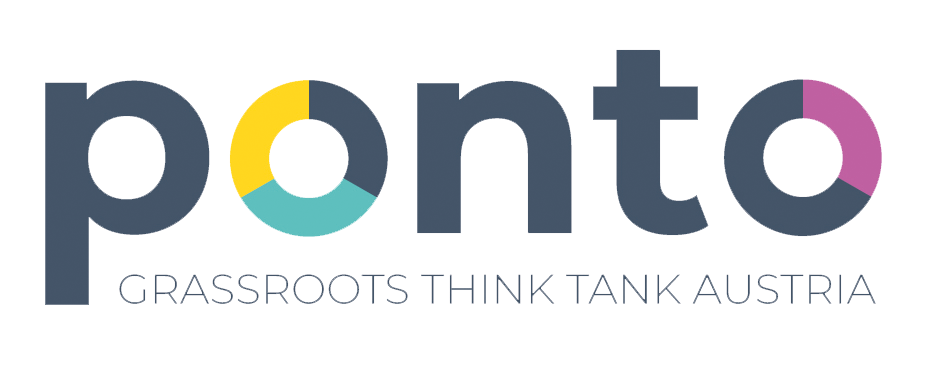As the offensive to reconquer Idlib was put on hold, it is useful to recall that the notion of ‘Useful Syria’ as geographic reference to the population-rich axis of Aleppo-Homs-Damascus, as well as the coastal areas of Latakia and Tartus, does not accurately reflect the regime´s intention of reconquering all of Syria. This makes the Idlib offensive not the end of the civil war, but merely its next stage that will be followed by further regime manoeuvring and fighting to retake the country´s north and east. It makes more sense to reconceptualise ´Useful Syria´ in terms of loyalty, i.e. as reference to the regime’s policies to consolidate its power by rewarding loyalty and punishing ‘betrayal’.
The term ‘Useful Syria’ was popularised by analysts in July 2015 after a deal between the regime and rebels was struck to end the siege of al-Fuah and Kafraya, two towns in Idlib in the north-west of Syria. The Shiite population of the two cities was exchanged with the population of the Sunni towns of Madaya and Zabadani near Damascus, cities that had also been besieged by the Syrian regime. Since then, it has become a shorthand reference to the Aleppo-Homs-Damascus axis, as well as Syria’s coastal regions, with the implication that, in a pinch, the regime would consider restoration of its control over these areas as an acceptable outcome of the war. In a candid speech on 26 July 2015, Syrian President Bashar al-Assad in fact conceded that the Syrian army could not guard every spot of Syrian soil because otherwise more crucial areas would be infiltrated by ‘terrorists’, endangering their stability. But Assad did not use the words ‘Useful Syria’ to refer to these territories. Rather, four minutes later into the same speech, he stressed that all regions of Syria are equal and that the regime does not discriminate, but that military exigencies require a temporary preference to defend the more strategically important areas first.
Nevertheless, Western analysts soon framed a kind of ‘Useful Syria’-doctrine that would supposedly guide the Syrian regime´s strategy to consolidate its grip over said parts of the country[1]and of Iran to connect Hezbollah’s strongholds in Lebanon with Syria’s coastal region.[2]This, however, ignored the repeatedly and publicly stated intent of the regime to take back ‘every inch of Syria’.[3]Tellingly, the term ‘Useful Syria’ has not once been employed by the Syrian regime’s itself. The only article in Syrian state media that refers to this concept heavily criticizes the notion and sees it as a US invention aimed at splitting up Syria and to maintain its military base in al-Tanf on the Syrian-Iraqi border.[4]So, where does the term ‘Useful Syria’ come from if not from the Syrian regime?
Historically, ‘Useful Syria’ meant something different. Around 1920, the French used it in a bid to maintain control over today’s Syria and the petroleum resources of Mosul while renouncing their claim to ‘Greater Syria’, which included Palestine and Jordan. At the time, Palestine and Jordan were considered ‘Useless Syria’. As it happened, the French Prime Minister Clemenceau in the end also had to surrender the Mosul region to his British counterpart, Lloyd George, under intense pressure, but managed to retain 23,75% of the shares of what would later become the Iraq Petroleum Company for the ‘Compagnie française des pétroles’ (now Total).[5]
More recently, the French journalist Georges Malbrunot used the expression ‘Syrie utile’ in an article in Le Figaro in 2012[6], predicting that the Syrian regime might have to withdraw to the country’s economic and population centres. In making his case, Malbrunot took a page from the French colonial playbook in Algeria: keep control over economically relevant regions as basis for fighting a long war of attrition against internal ‘enemies’.
The dichotomy of useful/useless (utile/inutile) is well known to the French as they widely practiced it during their colonial rule in Africa. The French aimed to control cities at the coast as well as resource-rich regions in the periphery (‘Afrique utile’) while marginalizing economically irrelevant regions (‘Afrique inutile’).[7]French policy in Morocco is a good example of this practice: the French focused on controlling the urban centres of Rabat and Casablanca but left the Rif region to its own devices, the effects of which can still be felt today.[8]
When one applies this economic approach to Syria, it is self-evident that the agriculture, oil and phosphate-rich regions of Palmyra and Deir Ezzor in the east of the country will not be considered ‘useless’ by the Syrian regime as their revenues are significant.[9]That the Syrian military fought to regain those regions before advancing south and towards Idlib is telling. In short, the geographical and economical notion of ‘Useful Syria’ only makes sense when including the resource-rich eastern parts of the country. But this makes practically all of Syria ‘useful’, rendering the notion analytically impractical.
A more helpful way of applying the notion of ‘Useful Syria’ discards its geographical connotations, and views it in loyalist terms instead. Through population- and ceasefire deals the regime re-established social control over reconquered areas and made them ‘useful’. Inhabitants were given the option to remain, or to move to rebel-controlled areas such as Idlib. Those that remained know that they are under government surveillance. The climate of fear that has been created by mass disappearances, torture and executions has further battered them into submission. The resulting ‘loyalty’ will help prevent future uprisings. Further loyalist strategies for creating a ‘Useful Syria’ that the regime applies include considering those that fled military conscription as having lost a right to return,[10]imprisoning returning refugees viewed as disloyal and rewarding loyalists with contracts to rebuild destroyed cities and giving them preferential housing access. Finally, some areas in Syria have been selectively depopulated of Sunnis, which strengthens the regime´s support base in strategic locations.[11]In terms of loyalty these areas are now ‘useful’ to the Syrian regime, as the risk of a future uprising has been decreased.
In summary, when thinking about the Syrian regime’s war fighting strategy, two things are worth keeping in mind. First, the Syrian regime does not limit itself to a geographical notion of a ‘Useful Syria’ in the sense of the Aleppo-Homs-Damascus axis and the coastal regions. Instead, the resource-rich east is part and parcel of its reconquest. This means that Assad’s repeated announcements to take back every inch of Syria need to be taken at face value. The regime’s military preparations for the campaign on Idlib are in full swing and negotiations with Syria’s Kurds and the Syrian Democratic Council have commenced to agree on a roadmap that would see regime cooperation in the provision of utilities and services. That the US presence in al-Tanf is a thorn in the Syrian’s regime flesh is no secret. In the longer term, Syrian military advances on al-Tanf and the adjacent areas of the Syrian-Iraqi desert where remnants of ISIS pursue their activities can be expected.
Second, the regime shores up loyalty by instilling a climate of fear in reconquered regions as well as in areas that never rose against it. In reconquered areas, the regime moreover engages in selectively permitting refugee and IDP return based on perceived loyalty. This re-population tactic is key to decrease the risk of future uprisings. International reconstruction policies and aid should be mindful of it.
Fotocredit: Bo Yaser
Autor
 Matthias Sulz ist Junior Research Associate bei der Conflict Research Units des Clingendael Instituts in Den Haag. Er studiert zurzeit International Security an der Universität Sciences Po Paris und hat einen Bachelor Abschluss in Politikwissenschaften und Orientalistik von der Universität Wien.
Matthias Sulz ist Junior Research Associate bei der Conflict Research Units des Clingendael Instituts in Den Haag. Er studiert zurzeit International Security an der Universität Sciences Po Paris und hat einen Bachelor Abschluss in Politikwissenschaften und Orientalistik von der Universität Wien.
Dieser Beitrag ist Teil der Forschung des Levant research program von Clingendael.
Literaturnachweise
[1]Sayigh, Y. (2015): http://carnegie-mec.org/2015/06/25/redrawing-lines-in-syria-s-shatterbelt-pub-60484; Qutrib, H.I. (2017): https://www.kfcris.com/en/view/post/130 / Beauchamp, Z. (2016): https://www.vox.com/2016/3/15/11240318/putin-syria-withdrawal-retro / Thompson, J. (2018): http://meirss.org/1262-2/ / Haid, H. (2016): https://lb.boell.org/en/2016/10/28/partitioning-syria-solution
[2]Ghaddar, H. (2016): https://www.washingtoninstitute.org/policy-analysis/view/irans-useful-syria-is-practically-complete
[3]Cousseran, J.-C.; Daguzan, J.-F; Levallois, A.; Tannous, M.-N. (2016): p. 10. https://www.frstrategie.org/web/documents/programmes/observatoire-du-monde-arabo-musulman-et-du-sahel/publications/4.pdf / Sanger, D.E.; Gladstone, R. (2016): https://www.nytimes.com/2016/06/08/world/middleeast/defiant-assad-vows-to-retake-every-inch-of-syria-from-his-foes.html
[4]Alloush, I. (2017): http://tishreen.news.sy/?p=96140#prettyPhoto
[5]Laurens, H. (2003): https://www.monde-diplomatique.fr/2003/04/LAURENS/10102
[6]Malbrunot, G. (2012): http://www.lefigaro.fr/international/2012/06/13/01003-20120613ARTFIG00732-syrie-pourquoi-le-regime-durcit-la-repression.php
[7]Cf. Reno, W. (1999): Warlord Politics and African States. Boulder, CO: Lynne Rienner
[8]Cf. https://www.economist.com/middle-east-and-africa/2017/07/08/moroccos-unrest-is-worsening
[9]Balanche, F. (2017): https://www.washingtoninstitute.org/policy-analysis/view/assad-needs-useless-syria-too /Charap, S.; Martini, J. (2018): https://www.rand.org/blog/2018/07/time-to-make-a-deal-on-syria.html
[10]خطابالرئيسالأسدبتاريخ26-7-2015: https://www.youtube.com/watch?v=pdBCQqWSKCAMin. 44:05
[11]https://www.washingtoninstitute.org/policy-analysis/view/irans-useful-syria-is-practically-complete
Beitragsbild: https://commons.wikimedia.org/wiki/File:Destruction_in_Homs_(4).jpg
